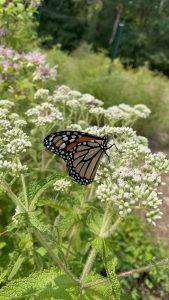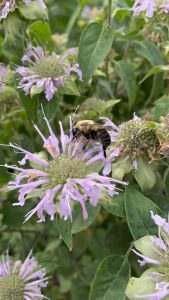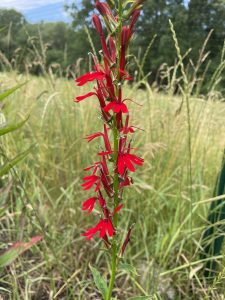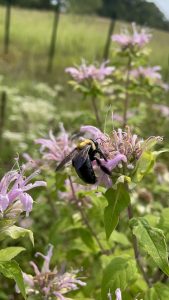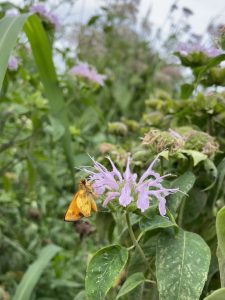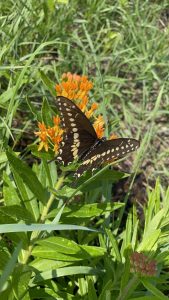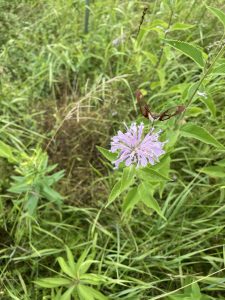Written by Jillian Perkins
Now that my time as the Pollinator Intern has come to an end, I wanted to take the time to reflect back on the experience. First of all, I wanted to thank everyone at LLCT for giving me this opportunity! It was the perfect way to end my Environmental Science degree program. This summer was a hot and humid one, which more often than not gave me the feeling of being back in my home state of Louisiana. Although the temperatures reached sweltering highs throughout these last two months, I still found the work at each of our pocket pollinator gardens to be enjoyable. Whether my time was spent amongst the busy bumblebees, chirping crickets, or the chatter of bird calls, the never-ending weekly task of pulling invasive and weedy plants quickly became bearable. Watching many of the plants that I myself planted as a volunteer last fall as well as at the beginning of the year grow and thrive has been a very fulfilling experience that I am proud to have been a part of. I have to admit that I have become attached to each of these pocket gardens and look forward to visiting them to check on their progress in the years to come!
If I had to choose a favorite experience from this internship, it would definitely be having a front row seat to watch each of these little ecosystems function in perfect harmony. Watching each native plant species finally bloom, fulfill their function as a resource for the many pollinators that visit them, then reach dormancy only for other native plant species in the garden to bloom and continue providing resources for the ecosystem was a wonderful thing to experience. It’s one thing to learn about how each of our Earth’s ecosystems function and how each species, whether plant or animal, serves an important purpose but it is much more of a learning experience to actually witness this in person. It was also very interesting to see how certain plants were more popular among certain pollinator species than others, such as the Wild Bergamot, which was a popular choice amongst the many bumblebee species and the Lon Zabulon skipper butterfly species. The Butterfly Milkweed is of course a big hit amongst the many different butterfly species that graced me with their presence while out at the garden sites, and Joe Pye-weed was a close second in popularity amongst the butterflies as well. The hummingbirds and hummingbird moths proved to be quite elusive when I tried to photographed them, but I can attest that the Cardinal Flower and Wild Bergamot were favorites of these pollinators as well.
Overall, this internship experience is one that I am very grateful to have had. The self confidence that I have gained as a new professional in the field of conservation, as well as the increased appreciation that I was able to foster for the planet that we live on, are two experiences that I was not expecting to gain by the end of my internship but are ones that I am glad to be able to bring with me as I graduate this Fall and step into the field of environmental conservation.
Photos by Jillian Perkins, taken at Chapman Pasture, LLCT Pollinator Meadow, Codman Island Garden, or Codman Roadside Garden.
LLCT thanks Jillian for her hard work this summer. She spent more than 60 hours at LLCT’s pollinator gardens as part of this internship, doing a weekly watering and weeding at Chapman Pasture, LLCT Pollinator Meadow, and two of the pocket garden sites in South Lincoln. Her efforts, particularly in this summer’s dry spell, ensured the survival of new plants that were added in the spring.


